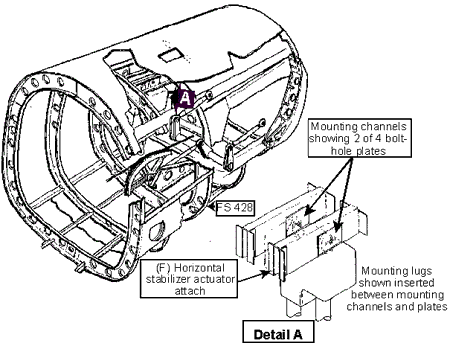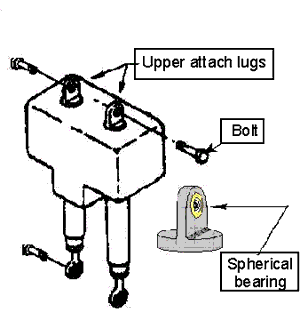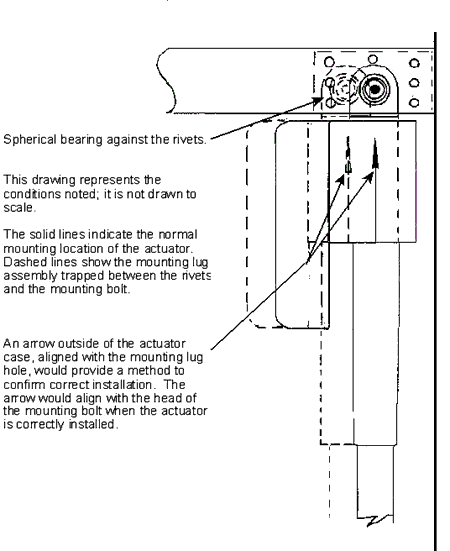Loss of Pitch Control and Collision With Terrain
Transwest Air Limited
Beech 99A, C-FDYF
Prince Albert, Saskatchewan, 6 nm SW
The Transportation Safety Board of Canada (TSB) investigated this occurrence for the purpose of advancing transportation safety. It is not the function of the Board to assign fault or determine civil or criminal liability. This report is not created for use in the context of legal, disciplinary or other proceedings. See Ownership and use of content. Masculine pronouns and position titles may be used to signify all genders to comply with the Canadian Transportation Accident Investigation and Safety Board Act (S.C. 1989, c. 3).
Summary
The Transwest Air Limited, Beech 99A aircraft, C-FDYF, serial No. U-110, was on a scheduled flight from Saskatoon, Saskatchewan, to Prince Albert, Saskatchewan, with two pilots and four passengers on board. The aircraft was approximately 4000 feet above sea level when the crew selected the flaps for the approach to Prince Albert. A bang was heard from the rear of the fuselage. The aircraft commenced an uncommanded pitch-up to a near-vertical attitude, then stalled, nosed over, and began a spin to the left. The crew countered the spin but the aircraft continued to descend in a near-vertical dive. Through the application of full-up elevator and the manipulation of power settings, the pilots were able to bring the aircraft to a near-horizontal attitude.
The crew extended the landing gear and issued a Mayday call, indicating that they were conducting a forced landing. The aircraft struck a knoll, tearing away the belly cargo pod and the landing gear. The aircraft bounced into the air and travelled approximately 180 metres, then contacted a barbed-wire fence and slid to a stop approximately 600 metres from the initial impact point. The crew and passengers suffered serious but non-life-threatening injuries. All of the occupants exited through the main cabin door at the rear of the aircraft. The accident occurred during daylight hours at 1802 central standard time.
Factual information
Records show that the pilots were certified and qualified in accordance with current regulations. All required flight control checks had been completed, and, at the time of the occurrence, the aircraft was being operated with normal aerodynamic flight loads.
The reported weather for Prince Albert at 1800 central standard timeFootnote 1 was as follows: wind from 120° at 14 gusting to 21 knots, visibility 15 statute miles, a few clouds at 6000 and at 9000 feet, and temperature 21°C.
The aircraft was equipped with a Fairchild model A100 cockpit voice recorder (CVR). The CVR was removed from the aircraft and forwarded to the Transportation Safety Board of Canada (TSB) Engineering Branch for examination. The crew activated the Narco ELT-10 prior to impact, and the emergency locating signal was successfully transmitted throughout the occurrence and after the aircraft came to rest.
After the accident, inspection of the horizontal stabilizer trim control system revealed that the stabilizer trim actuator had fallen from the upper airframe mounting structure, allowing the stabilizer to move freely in flight. The mounting bolts had been installed through the airframe brackets but not through the mounting lugs of the trim actuator. Contact marks on the mounting lug assemblies, marks on the channel and plate assemblies, and worn rivets indicated that the upper mounting lugs had been positioned ahead of the normal mounting location. Placed in this manner, the spherical bearings of the lugs were positioned slightly above and in contact with the plate-to-channel attachment rivets. Marks on the rear of each mounting lug confirmed that the mounting bolts were installed behind the mounting lugs, trapping the mounting lug assemblies between the rivets and the bolt shanks. Positioned in this manner, the mounting lugs are approximately ¾ inch ahead of their appropriate location (see Appendix A).
The occurrence flight was the 12th flight after the completion of the continuing airworthiness program heavy-maintenance inspections that involved disassembly, inspection, and re-assembly of the aircraft wings and tail section. During this process, it was decided that the horizontal stabilizer trim actuator required replacement. A replacement unit was installed, and the unit was tested for functionality and adjusted. The procedures involved multiple applications of stabilizer trimming through all ranges of its operation.
The airframe mounting structure for the horizontal stabilizer trim actuator consists of four channel-and-plate assemblies that are aligned fore-and-aft and installed between a former, located at station 418.900, and a bulkhead located at station 428.335, in the upper section of the aircraft tail. To provide a bolt hole through which close-tolerance mounting bolts are installed, a plate is rivetted to each channel. There are two upper mounting lugs on the horizontal stabilizer trim actuator; both mounting lugs include a spherical bearing. To attach the trim actuator to the upper airframe structure, a separate high-tolerance bolt is installed through the holes in each set of paired channels and through the spherical bearing for each of the mounting lugs. The installer is on his knees, leaned forward and holding the actuator (approximately 10 pounds) in place, above and ahead. The mounting lugs are hidden from view between their respective channels and the bolts are installed by feel. At any time in the process, the spherical bearings may rotate slightly, making it difficult to insert the close-tolerance bolts. The normal procedure is to insert a bolt through one of the channel pairs and the mounting lug, suspending the weight of the actuator from the airframe mounting structure (see Figures 1 and 2).
On the ground, the weight of the elevator causes the leading edge of the horizontal stabilizer to pivot upwards applying a compressive load through the stabilizer trim actuator to the airframe mounting structure. During flight, the actuator experiences both compressive and tensile loads. The Beech 99 Airliner Series Maintenance Manual, section 27-40-00, specifies the procedure for accomplishing horizontal stabilizer trim actuator load testing. This procedure is designed to assess the proper operation of the internal components of the actuator. The trim actuator is run through its range of travel, with weights applied to the leading edge and then to the trailing edge of the horizontal stabilizer and elevator assembly, to assess smoothness and efficiency of operation. As an alternative to the load test, the actuator may be replaced by a new or overhauled actuator. In this instance, since the actuator was replaced with an overhauled unit, this procedure was not accomplished.
The aircraft maintenance engineer (AME) who installed the horizontal stabilizer trim actuator had worked approximately 32 years in aviation and was experienced with maintenance procedures on Beech aircraft. Although the installer had not previously installed a horizontal stabilizer trim actuator on a Beech 99A aircraft, he referred to the maintenance manual during the process.
The Beech 99 Airliner Series Maintenance Manual, section 27-40-00, provides instructions for the horizontal stabilizer actuator's installation. Sub-paragraph c. directs the installer to "secure the actuator to the fuselage cross member with two upper bolts and one of the lower bolts… " Also in that sub-paragraph, there is a double-indented, side-barred, caution message, which states, "Install the two washers on each of the two upper bolts outside of the fuselage brackets as shown in figure 201A." During the installation, the AME placed washers outboard of the brackets/channels, as prescribed. To prevent distortion of the mounting channels during tightening of the bolt, the AME attempted to install an additional washer between the spherical bearing and the mounting channel. After the occurrence, the washer was found loose in the belly of the aircraft.
With the trim actuator installed between the airframe mounting channels, the area behind the mounting lugs is hidden from view. When viewed from the front, the heads and nuts of the bolts line up outside the channels, but it is difficult to assess whether the bolts pass through or behind the lugs. When the bolts have been installed, the mounting lugs are hidden behind the channel assemblies. There are no alignment marks on the sides of the actuator or on the airframe channels to identify the correct positioning of the actuator.
At the completion of the maintenance work, the floor supervisor, an AME with more than 25 years of aviation experience, completed a dual inspection and certification for the horizontal stabilizer actuator and other flight controls affected during maintenance. In addition, because of the extensive amount of work accomplished, the floor supervisor had other qualified AMEs inspect the flight controls prior to releasing the aircraft for a test flight.
Transport Canada published Airworthiness Notice (AN) C010, Edition 2, dated 10 October 2001, on the inspection of control systems. AN C010 explains the regulations applicable to the maintenance of engine and flight controls and outlines the applicable standards for control system maintenance, especially for the second independent control check of control systems after maintenance. Both the installing AME and the floor supervisor had previously read AN C010.
The TSB investigated a similar occurrence in June 1999 (TSB Report No. A99H0002) where a Beech King Air A100 aircraft sustained a similar detachment of the horizontal stabilizer trim actuator just after takeoff. Prior to that occurrence, the upper attachment bolts for the horizontal stabilizer trim actuator had been installed through the airframe mounting structure but not through the upper mounting lugs of the actuator. Information gathered during that investigation indicated that the tightening of the attachment bolts during installation had squeezed the ends of the actuators to the attachment points on the airframe. The horizontal stabilizer trim actuators and the airframe attachment structure are identical for the B99 and B100 model aircraft.
Analysis
At the time of the occurrence, the crew were operating the aircraft within normal parameters and had completed the required checks. Therefore, crew actions, weather conditions and navigational aids were not considered to be factors in the occurrence. The analysis will discuss the conditions that facilitated an improper installation of the trim actuator and the difficulties in the successful completion of an independent control check.
During installation of the trim actuator, the installer is in an awkward position and is holding the relatively heavy actuator in place and ahead of him. The mounting lugs are hidden from view from the side by the mounting channels and hidden from the front by the body of the actuator, so the bolts are installed by feel. If the actuator is moved rearwards and against the bulkhead, the bolts cannot be inserted. However, the mounting lugs can be positioned far enough forward that the bolts may be inserted behind rather than through the lugs. The installer might expect that the actuator would simply fall free if the bolts were not correctly installed. However, as in this instance, the mounting lug assemblies can become jammed between rivets and the mounting bolts. The weight of the actuator is suspended leading the installer to believe that the bolts have been successfully installed.
When one upper mounting lug is correctly placed within the airframe attachment structure, the geometry of the actuator ensures that the second lug will be correctly positioned. During installation, if a small-diameter pin were inserted through the attachment structure for one mounting lug, the weight of the actuator could be suspended from that pin while a close-tolerance bolt was installed at the other mounting lug. The pin could then be removed and a high-tolerance bolt installed in its place. Additionally, if arrows were marked on the sides of the actuator, in line with the holes in the spherical bearings (see Appendix A), the correct positioning of the actuator could be easily determined. There were no published warnings to indicate that special attention is required when installing actuator mounting bolts, nor were there procedures outlined to ensure the correct installation of the high-tolerance bolts.
The installation, adjustment, and testing of the stabilizer system had been completed prior to the accomplishment of the dual inspections of the flight controls. The AMEs inspecting the installation determined that the bolts were installed through the holes in the airframe channels and that the appropriate washers and self-locking nuts were in place. The confined space of the installation area and the shape of the components, which complicate the installation, also made it very difficult to inspect the installation. As a result, the incorrect installation went undetected.
Because the actuator is constantly under compression when the aircraft is on the ground, the required functional testing of the horizontal stabilizer system did not identify the improper installation of the actuator. In flight, however, the trim actuator experienced compressive and tensile loads. The rivets that were holding the actuator in place gradually wore away, the actuator became detached during the occurrence flight, and the crew lost pitch control of the aircraft.
Findings
Findings as to causes and contributing factors
- During flight, the horizontal stabilizer trim actuator worked free of the mounting structure, and as a result, the flight crew lost pitch control of the aircraft.
- During replacement of the horizontal stabilizer trim actuator, the upper attachment bolts were inserted through the airframe structure but did not pass through the upper mounting lugs of the trim actuator.
- The improperly installed bolts trapped the actuator mounting lug assemblies, suspending the weight of the actuator and giving the false impression that the bolts had been correctly installed.
- Dual inspections, ground testing, and flight testing did not reveal the faulty attachment.
Findings as to risk
- The nature of the installation presents a risk that qualified persons may inadvertently install Beech 99 and Beech 100 horizontal stabilizer trim actuators incorrectly. There are no published warnings to advise installers that there is a potential to install the actuator incorrectly.
Safety action
- On 02 May 2003, the Transportation Safety Board of Canada (TSB) issued an occurrence bulletin (A03C0094) detailing the factual information relative to this occurrence and the Beech King Air 100 occurrence of June 1999.
- On 20 June 2003, the TSB forwarded a Safety Advisory regarding the facts of this occurrence to Transport Canada for potential safety action.
- Transport Canada produced a Service Difficulty Alert (AL-2003-07, dated 2003-07-17) based on TSB occurrence bulletin A03C0094 advising of the occurrence and indicating that the installation procedures in the maintenance manual are being reassessed.
- Transport Canada contacted the U.S. Federal Aviation Administration, requesting their assistance and that of the aircraft manufacturer, suggesting issuance of a service letter and incorporation of warnings in the appropriate aircraft maintenance manuals.
- Raytheon Aircraft issued King Air Communiqué No. 2003-03 to alert appropriate operators and maintenance personnel of the possibility of incorrect installation of the actuators.
This report concludes the Transportation Safety Board's investigation into this occurrence. Consequently, the Board authorized the release of this report on .


